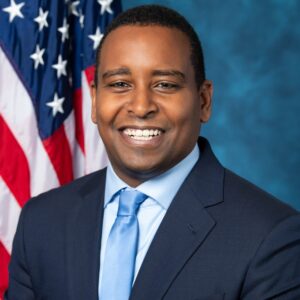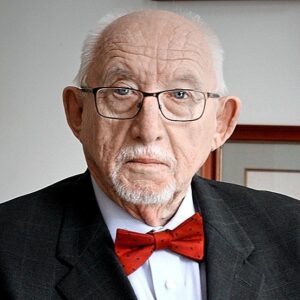Career Readiness: Taking the “Career” in “College & Career” Seriously (Part 1)
By Berrick Abramson
For most of the past decade, I’ve worked across the country helping state leaders ensure every child has access to a great education. In that effort, I’ve worked with some incredibly bright and passionate educators, school leaders and state officials on everything from rethinking how we prepare and support new teachers to frameworks for improving struggling schools. I’ve been inspired and encouraged by the progress — even if incremental and, at times, slow. But it’s when I’m not on the road, when I’m home and helping raise two amazing kids that a single question dominates my thinking: Is the education our kids have access to going to prepare them to succeed in the world after they graduate high school?
As I look just around the corner to that day coming when one of ours will chart the next chapter in her life, as I reflect on my time in the private sector and as an entrepreneur, and as I look around at the changing world around us, the answer to that single question haunts my thoughts. On a scale of one to 10, I’d struggle to give much above a five in most school districts where I’ve spent time. Even in states and districts where impressive strides are being made, the equity of access to programs that are meaningfully aligned to local opportunity keeps the score at that same range.

That career readiness has taken a back seat to college readiness should not be a surprise to anybody who has been involved with recent ed policy debates or to those who have paid attention to trends and developments of the past 30+ years. The 1983 publication of “A Nation at Risk” shaped the conversations and shifts in public education for more than a quarter century. It raised alarms that, at a time of increasing globalization in both commerce and intellectual property, the average graduate of our schools and colleges was not as well educated as those a quarter century earlier. The report, issued as the country was adapting to global service and technology economies in a post-industrial era, ushered in a curriculum that emphasized college preparation and de-emphasized the role of K-12 education in job training and workforce preparedness. To be sure, valid concerns were being raised about what we now call Career and Technical Education (CTE) (“vocational ed” at the time), which had a built-in tendency to perpetuate stigmas, intergenerational cycles of poverty and “tracking” across race, socioeconomic background, and gender. But the move to “college or low-income and less valued” put the nation on an equally troubling trajectory.
America’s students again face a wave of change in a quickly evolving global world and workplace. Today, many of the education discussions in state capitols and education policy conferences are dominated by those who were students of the thinking that came from “A Nation at Risk,” educated in a system that said success means college and going to college assured success (and the converse insinuation about anything less than a four year or graduate degree). From my experiences, particularly the past decade, when too many education and policy leaders say “college or career ready,” they really mean “college and the career after college ready.” And, when then they say “college,” they really mean an elite university. Compounding the challenge, too often, education, job creation, and economic development operate and exist in silos without the close collaboration necessary to truly position students for post-K-12 success on the path of their choosing.
To be clear, every child should have access to an education that prepares them for success on — and gives them the choice of — whatever path they choose. But while a number of efforts have taken hold in recent years specifically addressing the “college ready” component of this commitment, “career ready” has not received equal or adequate attention in many states and communities. Whether a student will pursue a career after receiving a two-year, four-year, or advanced degree, is interested in a career that requires other types of post-high school training or will enter the workforce directly upon graduation, there are a variety of professional and technical skills needed in today’s evolving economy.
The need for more thoughtful, strategic, and comprehensive attention to career readiness is indeed gaining traction. Parents and students are increasingly demanding it and leaders in a number of states are taking action as are some forward-thinking district leaders.
The Council of Chief State School Officers (CCSSO) Career Readiness Initiative is supporting state chiefs with technical assistance advancing the recommendations from their Career Readiness Task Force’s Opportunities and Options: Making Career Preparation Work for Students. A number of state education leaders are working with local employers to provide high-demand skill training and pathways. In other states, nonprofits, employers, governors, and economic development officers have taken the lead. Among the encouraging and innovative efforts that may offer lessons for other district, city, and state leaders:
Nonprofit Leadership: In Colorado, the Public Education & Business Coalition (PEBC) is developing a toolkit to help district superintendents engage local business leaders to increase support and improve collaboration. Hawai’i-based nonprofit Harold K.L. Castle Foundation commissioned a study to identify success factors of work-based learning programs on the islands. Drawing on local and national exemplars, the study produced recommendations that reflected unique local context.
State Leadership: The Louisiana Department of Education (LDOE) created Jump Start to enable students to earn certifications in high-wage careers while in high-school. Since its launch in 2013, the number of students attaining a national or state industry credential has climbed from 14,473 the first year to more than 41,000 in the 2016-17 school year. The Michigan Department of Education recently announced a $5 million competitive grant program for districts “demonstrating partnerships with higher education and industries, and can demonstrate how funding will be used to increase training in high-wage, high-skill, high-demand occupations.” Nebraska’s Developing Youth Talent Initiative (DYTI) fosters partnerships between schools and employers and was launched to connect students with careers in manufacturing and technology. The Washington State Auditor conducted a performance audit of the state’s CTE courses and employer vacancies. The audit led to a report with recommendations to expand and improve CTE offerings to better align with high-wage, high-demand occupations.
Private Sector Leadership: In Virginia, Rolls-Royce’s recruitment and job-training efforts include paid internships for high-school students that usually lead to full-time employment after graduation. In California, Silicon Valley based Oracle opened a public charter school on the Oracle Campus. Design Tech students are mentored by Oracle employees, intern at the company, participate in specialized technology courses, and have access to the “design realization garage” to work on product prototypes.
Here at Keystone, we’re excited about the conversations we’ve been having and facilitating among city, state and district leaders about how to break down silos between the education system, economic development offices and private- and public-sector employers. We’ve found in some places a striking lack of historic coordination or collaboration but an equally exciting commitment to short-term action and long-term, sustainable changes that will serve kids and their communities.
Next week, in part two, we’ll share more about the work we’re doing, dig into the current employment prospects landscape and provide a roadmap we think local and state leaders can follow.
For this week’s “Ed Policy Chalk Talk,” I’d love to hear from people outside the ed policy bubble:
Employers: What are the skills (hard or soft) that are the hardest for you to find in new employees or that you expect to be most in-demand in the coming years?
Families: What has been your experience with the quality of and access to CTE or career preparation programs?
Berrick Abramson is Senior Policy Director at Keystone Policy Center where he leads our education practice. He has more than 20 years of experience in education and public policy. Berrick began his career in Silicon Valley where he worked in corporate finance and was a principal in a number of start-up and growth stage companies.


 Shelby Coffey III is a distinguished journalist, media executive, and thought leader whose career has helped shape the landscape of American news and public discourse. Over several decades, Coffey has held some of the most influential roles in journalism, including serving as editor of the Los Angeles Times, executive vice president of ABC News, and deputy managing editor of The Washington Post. His editorial leadership extended to key roles as president of CNN Financial News, editor of the Dallas Times Herald, and U.S. News & World Report.
Shelby Coffey III is a distinguished journalist, media executive, and thought leader whose career has helped shape the landscape of American news and public discourse. Over several decades, Coffey has held some of the most influential roles in journalism, including serving as editor of the Los Angeles Times, executive vice president of ABC News, and deputy managing editor of The Washington Post. His editorial leadership extended to key roles as president of CNN Financial News, editor of the Dallas Times Herald, and U.S. News & World Report. Effective March 1, 2025, Thomas J. Vilsack, former United States Secretary of Agriculture and Governor of Iowa, became the first Chief Executive Officer for the World Food Prize Foundation. In this new role, Governor Vilsack is focusing on expanding the Foundation’s global network, and will further position the Foundation as a leader in addressing global food and nutrition insecurity, continuing his lifetime of public service.
Effective March 1, 2025, Thomas J. Vilsack, former United States Secretary of Agriculture and Governor of Iowa, became the first Chief Executive Officer for the World Food Prize Foundation. In this new role, Governor Vilsack is focusing on expanding the Foundation’s global network, and will further position the Foundation as a leader in addressing global food and nutrition insecurity, continuing his lifetime of public service. Jerry Steiner has spent 40 years involved in agriculture following growing up on a Wisconsin dairy farm. He began his career with Monsanto, in multiple business leadership roles. From 2003-2013 he served as a member of the Executive team, as the company’s Executive Vice President of Sustainability and Corporate Affairs. He led the company’s global Government, Public and Industry Affairs teams across the 70 countries where Monsanto conducts business. This experience got Jerry connected to the Keystones centers work in agriculture. Key among his responsibilities were shaping the company’s public policy and building partnerships aimed at helping farmers around the world produce more food, while conserving valuable resources like water and energy. Two unique partnership that developed under his leadership were drought tolerant corn with 5 African countries, CIMMYT and the Gates foundation, and a building a sustainable business model in Brazil with the value chain leading to significant multi-company investment and soybean varieties that can protected themselves.
Jerry Steiner has spent 40 years involved in agriculture following growing up on a Wisconsin dairy farm. He began his career with Monsanto, in multiple business leadership roles. From 2003-2013 he served as a member of the Executive team, as the company’s Executive Vice President of Sustainability and Corporate Affairs. He led the company’s global Government, Public and Industry Affairs teams across the 70 countries where Monsanto conducts business. This experience got Jerry connected to the Keystones centers work in agriculture. Key among his responsibilities were shaping the company’s public policy and building partnerships aimed at helping farmers around the world produce more food, while conserving valuable resources like water and energy. Two unique partnership that developed under his leadership were drought tolerant corn with 5 African countries, CIMMYT and the Gates foundation, and a building a sustainable business model in Brazil with the value chain leading to significant multi-company investment and soybean varieties that can protected themselves. Jennifer Morris is the Chief Executive Officer of The Nature Conservancy, leading a team of nearly 6,000 staff working in more than 80 countries and territories tackling the dual crises of the
Jennifer Morris is the Chief Executive Officer of The Nature Conservancy, leading a team of nearly 6,000 staff working in more than 80 countries and territories tackling the dual crises of the  Congressman Joe Neguse represents Colorado’s 2nd District in the U.S. House of Representatives. He was elected to his first term in November 2018, becoming the first Black Member of Congress in Colorado history. In December 2022, Rep. Neguse was elected by his colleagues to serve as Chair of the Democratic Policy and Communications Committee (DPCC), becoming the first Coloradan to serve in a senior elected leadership role in the House in over 85 years. He serves on the Natural Resources and Judiciary Committees, and was also appointed by House Minority Leader Hakeem Jeffries to serve as one of four Democrats on the prestigious Rules Committee. Rep. Neguse serves as Ranking Member on the House Subcommittee on Federal Lands, which he previously Chaired in the 117th Congress.
Congressman Joe Neguse represents Colorado’s 2nd District in the U.S. House of Representatives. He was elected to his first term in November 2018, becoming the first Black Member of Congress in Colorado history. In December 2022, Rep. Neguse was elected by his colleagues to serve as Chair of the Democratic Policy and Communications Committee (DPCC), becoming the first Coloradan to serve in a senior elected leadership role in the House in over 85 years. He serves on the Natural Resources and Judiciary Committees, and was also appointed by House Minority Leader Hakeem Jeffries to serve as one of four Democrats on the prestigious Rules Committee. Rep. Neguse serves as Ranking Member on the House Subcommittee on Federal Lands, which he previously Chaired in the 117th Congress. Llewellyn King was born in Southern Rhodesia, now Zimbabwe. He went into journalism as soon as he turned 16, stringing for Time magazine and United Press in Africa.
Llewellyn King was born in Southern Rhodesia, now Zimbabwe. He went into journalism as soon as he turned 16, stringing for Time magazine and United Press in Africa. Steven Williams is the Chief Executive Officer of PepsiCo North America, overseeing a more than $48 billion business that spans PepsiCo’s Foods and Beverage operating units. His leadership encompasses more than 125,000 associates and over 900 locations across the U.S. and Canada. Steven joined PepsiCo in 2001 as part of PepsiCo’s acquisition of the Quaker Oats Company, which he joined in 1997, and has held leadership positions of increased responsibility since.
Steven Williams is the Chief Executive Officer of PepsiCo North America, overseeing a more than $48 billion business that spans PepsiCo’s Foods and Beverage operating units. His leadership encompasses more than 125,000 associates and over 900 locations across the U.S. and Canada. Steven joined PepsiCo in 2001 as part of PepsiCo’s acquisition of the Quaker Oats Company, which he joined in 1997, and has held leadership positions of increased responsibility since.